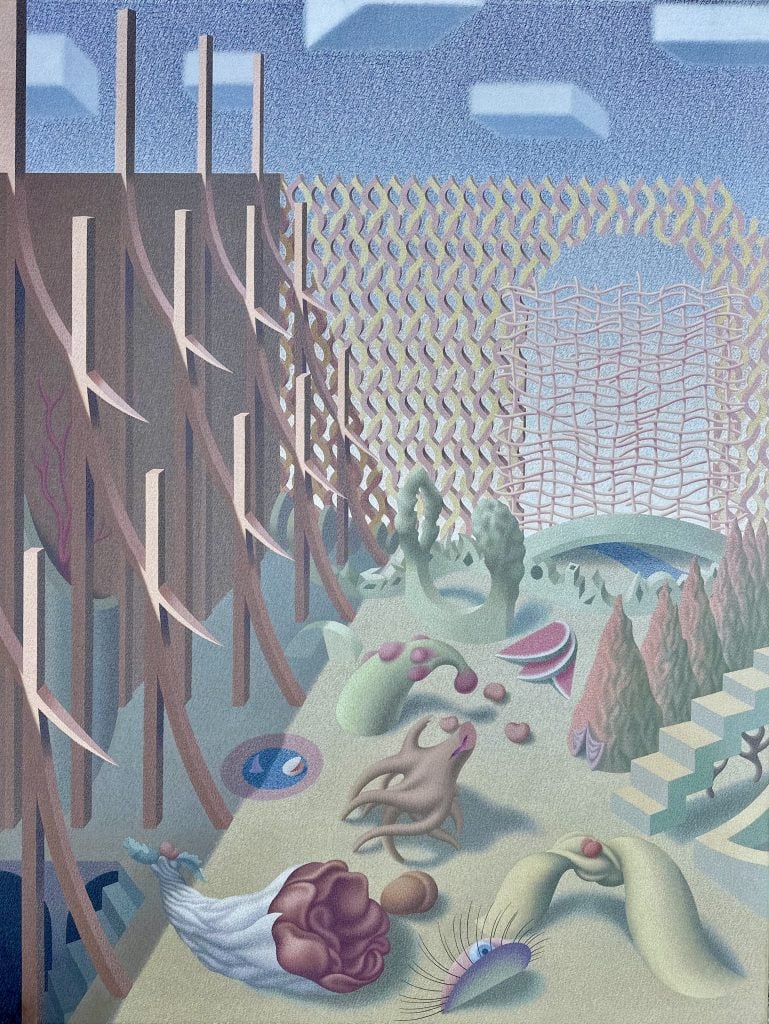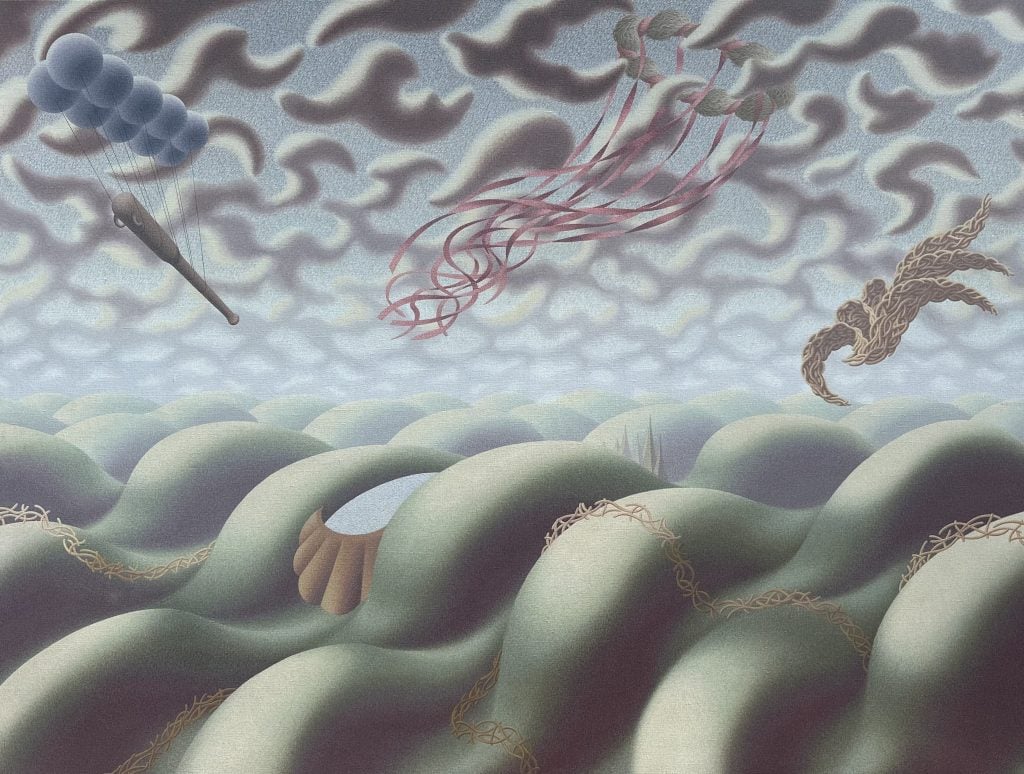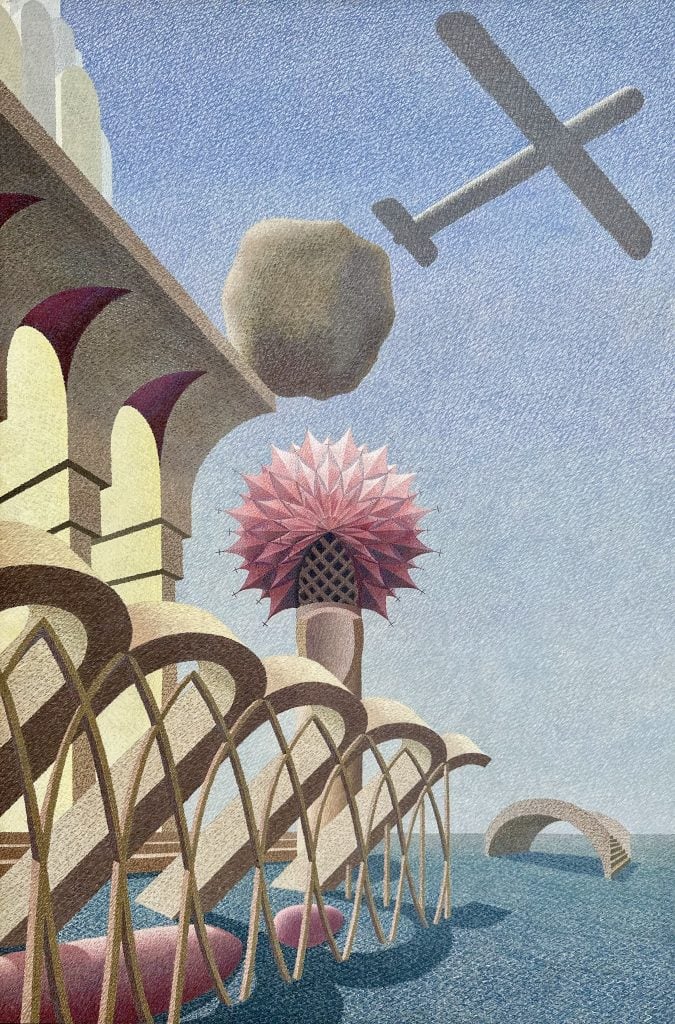Art & Exhibitions
A Disillusioned Surrealist Art Star Is Making a Comeback—50 Years Later
The artist is finally getting his due with a show at London's Maas Gallery.

The artist is finally getting his due with a show at London's Maas Gallery.

Vittoria Benzine

After half a century, a once-promising Surrealist star is bursting back onto the scene. “Henry Orlik: Cosmos Of Dreams” opens this week at London’s Maas Gallery—curated by Sotheby’s and Antique Roadshow alum Grant Ford, the founder of Orlik’s new gallery, Winsor Birch. The show will remain on view through August 20 before traveling to Marlborough, where it’ll likely feature new works, since most of Orlik’s paintings on offer have already sold. During the 1970s, when Orlik showed alongside René Magritte and Francis Picabia, critics swore he’d go down in art history. Despite the artist’s best efforts, it seems that prophecy may still come true.
Orlik was born 1947 in Ankum, Germany, where his Belarussian mother had been deported. His Polish father served with the Allies. Their family moved to England in 1948, and settled down in Swindon in 1959. Orlik enrolled at Swindon Art College in 1963, and then at Gloucestershire College of Art, Cheltenham in 1969. While there, Orlik appeared in a Royal Academy Summer Exhibition and presented his first solo show at Acoris Surrealist Art Centre in London. It sold out.

Henry Orlik in August 1982. Courtesy of Winsor Birch
The artist’s “excitations” style portrayed muted yet rich (and often cynical) surrealist landscapes through thousands of meticulous spiraled strokes inspired by quantum physics. One critic wrote, “I don’t think his publicity people will be referring to him as unknown for very much longer” upon seeing his debut solo show. But, after stints in New York and L.A., Orlik grew leery of the deep cuts dealers took from his sales. He returned home, retired from commercial art, and lived meagerly off of money his mother sent while devoting himself to painting.

Henry Orlik, Cannon Balloons. Acrylic on canvas. Courtesy of Winsor Birch
Life continued like that, until Orlik suffered a stroke in 2022. The Housing Authority evicted him while in recovery, and the roughly 200 canvases in his home were lost in the process. One of Orlik’s associates asked Ford to help track them down. No such luck yet. In the meantime, though, Ford realized it would make sense to host a show of Orlik’s work—not only to raise funds for the artist and introduce the world to his legacy, but also to demonstrate that the Housing Authority had disposed of valuable relics.
“I suppose with this exhibition, if those canvases are somewhere, it might actually—if they haven’t been thrown away—pull them out of the woodwork,” Ford considered over the phone.

Henry Orlik, Defeat (Aeroplane Over LA). Mixed media on card. Courtesy of Winsor Birch
To curate “Henry Orlik: Cosmos Of Dreams,” Ford focused on Orlik’s earlier works, where his signature gestures are more pronounced. Over time, his coils became less numerous, and his work got larger. Ford estimates there’s less than 100 existing example of his early “excitations” from the 1960s and 1970s. “There’s no other style like these,” Ford said. “These pictures buzz with a living essence.”
Thus, Orlick’s oeuvre is an unadulterated encapsulation of surrealist exploration, reemerging just in time for the movement’s centennial. “As he talks to the likes of me and close friends, and he’s seen what we’ve suggested,” Ford said, “you almost see a young man’s face light up, out of an older gentleman’s.”